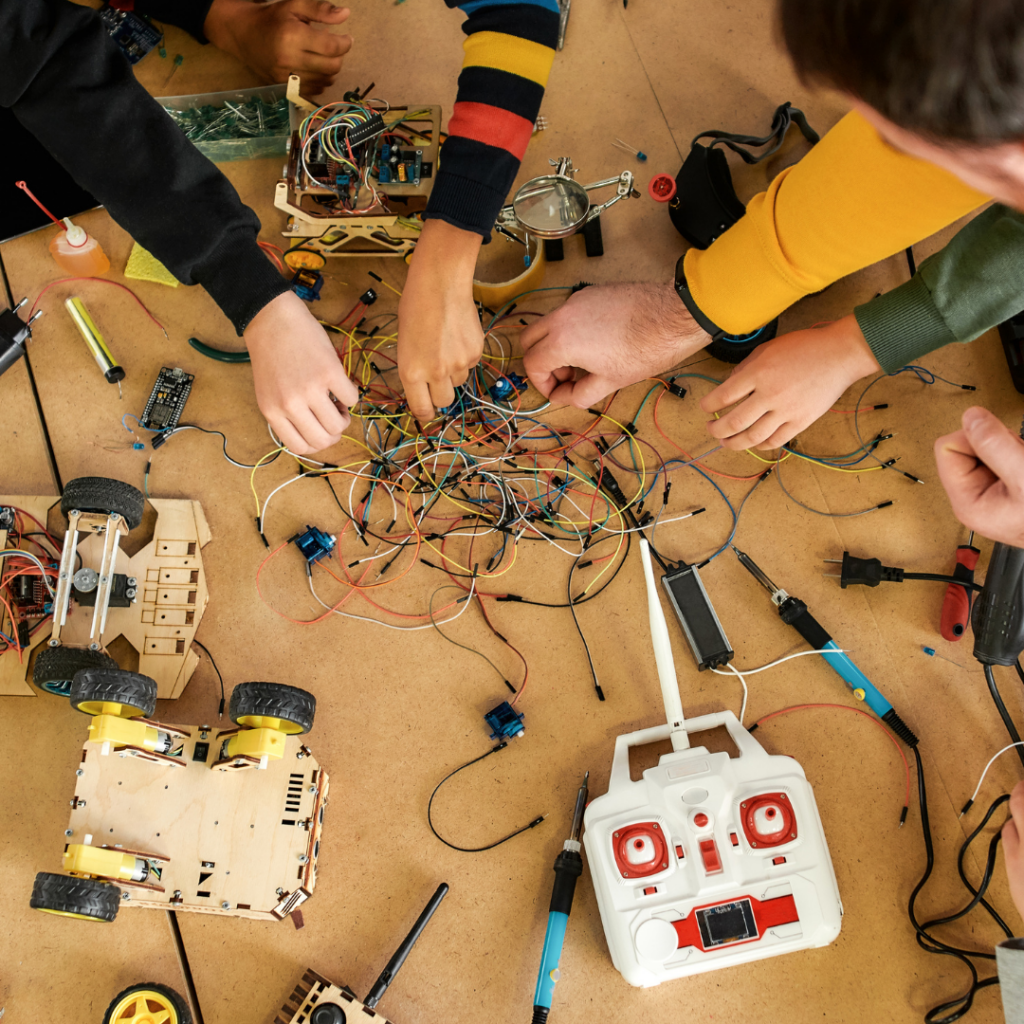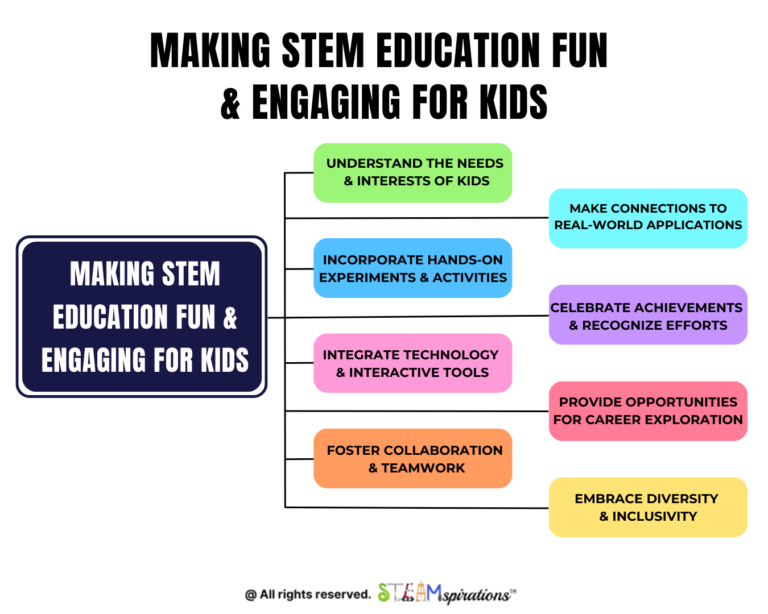Implementing best practices in STEAM education is one of the most effective approaches in creating an environment where students are actively engaged and can learn from each other. While we often associate STEM practices in education with Technology and Science, the STEAM approach is much more than that. Technology can facilitate project-based learning, but it takes more than just tools to create an authentic learning environment.
Not all students and teachers are the same, there is not a one size fits all approach that can help promote creativity in the classroom. However, there are best practices in STEAM education that can fundamentally help transform the environment of a classroom. The end goal in this approach is to pique students’ interest, and help them apply what they are learning in real-world scenarios. You can start integrating STEAM practices in education by fostering an open-communication environment where students are taught how to think and not what to think.
What is STEAM Education?
STEM stands for Science, Technology, Engineering, and Math, its goal is to promote student participation across these fields. STEAM is similar to STEM, but incorporates the Arts as well. The ultimate goal of STEAM practices is to raise students that are experimental and exploratory in nature, that seek to take thoughtful risks, are problem solvers, critical thinkers, and logic-based dialogue initiators.
STEAM is personified as Leonardo da Vinci and Michelangelo Buonarroti, both of whom excelled exceptionally in the arts and the sciences. Most famously known for the Mona Lisa painting, da Vinci was recognized for his work in hydrodynamics, anatomy, and optics. Moreover, the Italian sculptor Michelangelo worked as an engineer and architect as well. These men saw no lines between the sciences and arts, which is precisely what the STEAM approach seeks to achieve. In this blog, we put together 5 ways that we believe educators can become more authentic in the classroom when they take a STEAMspired approach when teaching.
1. Let Learning be Student Driven
Students easily become distracted in the classroom because of boredom. When educators were asked what the main distractions were to learning, conversations that were off-topic and devices such as phones made it to the top of the list. Much of this is because learning is teacher led and not student led. Students are often bored and distracted by their phones and turn to off topic conversations. In the STEAM approach, students are empowered to reflect and draw practical, relevant conclusions in the classroom in a student-centered environment. The goal in STEAM education is to eliminate the leading causes of boredom such as worksheets, and textbooks and create an ecosystem of ideas that are exchanged and are conducive to learning. If you’re thinking of incorporating STEAM practices in education, this is an excellent place to start. Find ways to integrate technology purposefully and engage students in thoughtful conversations.
Take time to understand the art of giving instruction. This approach is both engaging and interactive, it stimulates student interest, and helps develop brain power.
2. Reinforce Lessons Through Challenges
We encourage that the concepts being taught in class are reinforced through STEAM challenges that are not only fun and engaging, but also promote critical thinking.
It might seem like a lot of work at first, but it takes a few minutes a day to plan for interactive project-based activities and challenges. These projects should allow students to apply what they have learned, to build, test, reflect and redesign. Interactive activities such as challenges ensure that students are able to concentrate, and be present in the moment. This means they will be able to grasp new concepts, and respond more thoroughly in the classroom.
3. Instill in Students a Growth Mindset
Developing a growth mindset is fundamental in STEAM education. Things are bound to go wrong in the classroom, as they are in the real world. Hence, it is imperative that students learn how to cope with the unexpected challenges of life. If you’re not good at something, it means you need more practice. When you make a mistake, those are opportunities for you to learn and grow. Students often struggle with this, so it is important to cultivate a growth mindset in the classroom. Remind students that failure is a step in the right direction and they should not be afraid to make mistakes. Celebrate student failures and remind them that they are opportunities to learn and reflect.
4. Encourage Thoughtful Discussions
Apart from hands-on learning activities, students must also be encouraged to engage in thorough conversations. Even simple conversations can promote learning. Dialogue also helps encourage values like tolerance, acceptance, and confidence. Since most students are inherently afraid to speak publicly, it is great to encourage class discussion in STEAM Education. This model allows students to demonstrate their strengths in science, math, art, and other fields and learn from each other.
5. Brainstorm Together & Exchange Ideas
Using STEAM practices in education can prepare students for the real world through project-based learning. These projects should focus on providing solutions to everyday problems. Working in teams helps student develop strong communication and social skills, it fosters good sportsmanship and develops students that are better at problem solving and critical thinking.
You can give each group time to present and explain their ideas and thinking while other classmates ask questions. Brainstorming together gives students opportunities to verbalize their thoughts and discuss ideas with their peers. Moreover, it opens new avenues of collaboration that prepares them for the real world as they get out of their comfort zone and work with each other.
What are the Takeaways?
In the above text, we’ve outlined some of the best practices in STEAM education. However, this is not a complete guide. We are simply trying to create a platform to inspire others so that they can come up with new ideas and think on their own. We believe creativity begets creativity. STEAM education can be a powerful tool, implementing it in the classroom can generate real results in terms of learning, so we want to encourage you to embrace the STEAM approach to create an encouraging learning atmosphere in the classroom and prepare students that are equipped for jobs in the 21st century.

